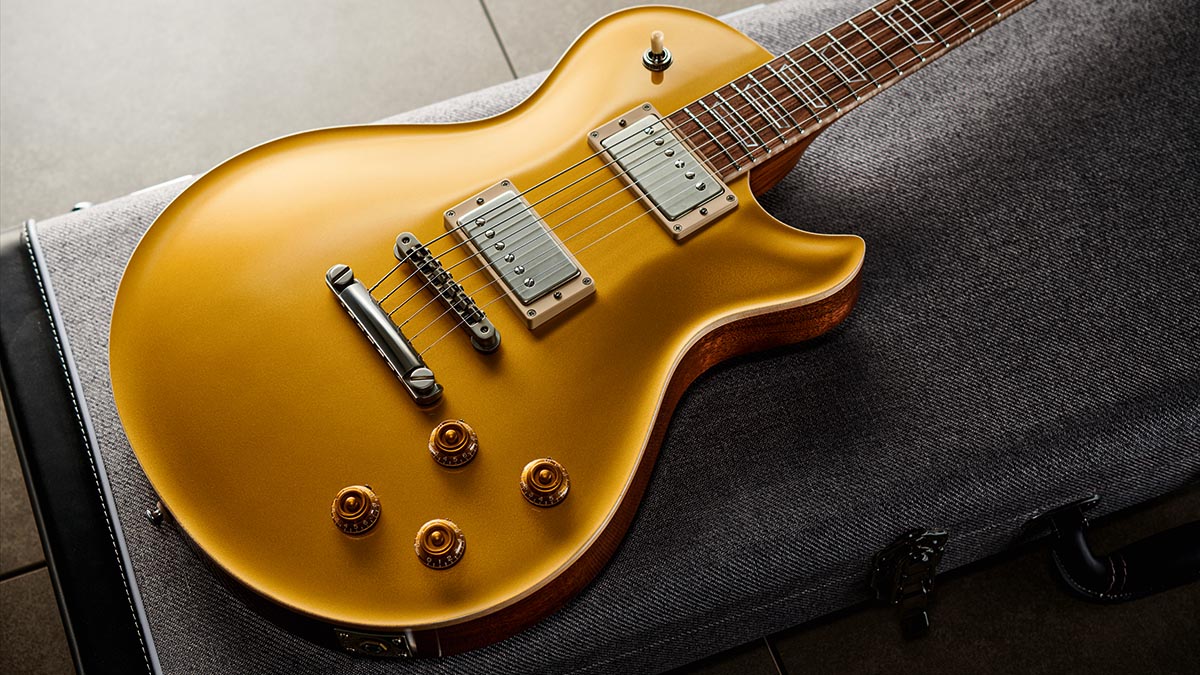Guitar World Verdict
The Macon SC Goldtop is beautifully designed, flawlessly constructed, plays uncompromisingly well, sounds fantastic and is delightful to behold. Compared with Murphy Lab Gibsons and PRS Private Stock models, the guitar looks to be something of a bargain.
Pros
- +
Beautifully designed.
- +
Flawlessly constructed.
- +
Plays uncompromisingly well.
- +
Sounds fantastic and is delightful to behold.
Cons
- -
Anything one doesn’t like is down to personal taste, but there are generally no cons.
You can trust Guitar World
Patrick Eggle is one of the UK’s highest profile guitar builders. Since bursting onto the scene with his PRS-alike Climaxe, which received its first review in this very publication back in 1991, he and his six-string creations have gone from strength to strength.
It’s not widely known, but Eggle spent time in America studying acoustic guitar making with the builder of James Taylor’s guitars, James Olson. He brought this knowledge, and a slew of his own ideas, to a range of high-end acoustics using exotic timbers and fancy inlays, and since returning to his first love – building fine electric instruments – he has brought some of that to the table, too.
We’ve reviewed several Macon models in Guitarist, from double-cuts and Junior styles, to super-flamed or quilted maple-capped SCs. The guitar you see before you looks, at least superficially, like a pretty bog-standard single-cut of the goldtop variety, but delve deeper and it soon becomes apparent there’s more going on.
Once you’ve familiarized yourself with the bright greenish-yellow of the Aztec gold top (more commonly seen on Fenders), and the figured Santos rosewood fingerboard with its ‘open’ crown-style fret markers and flamed maple binding, then turn the instrument over.
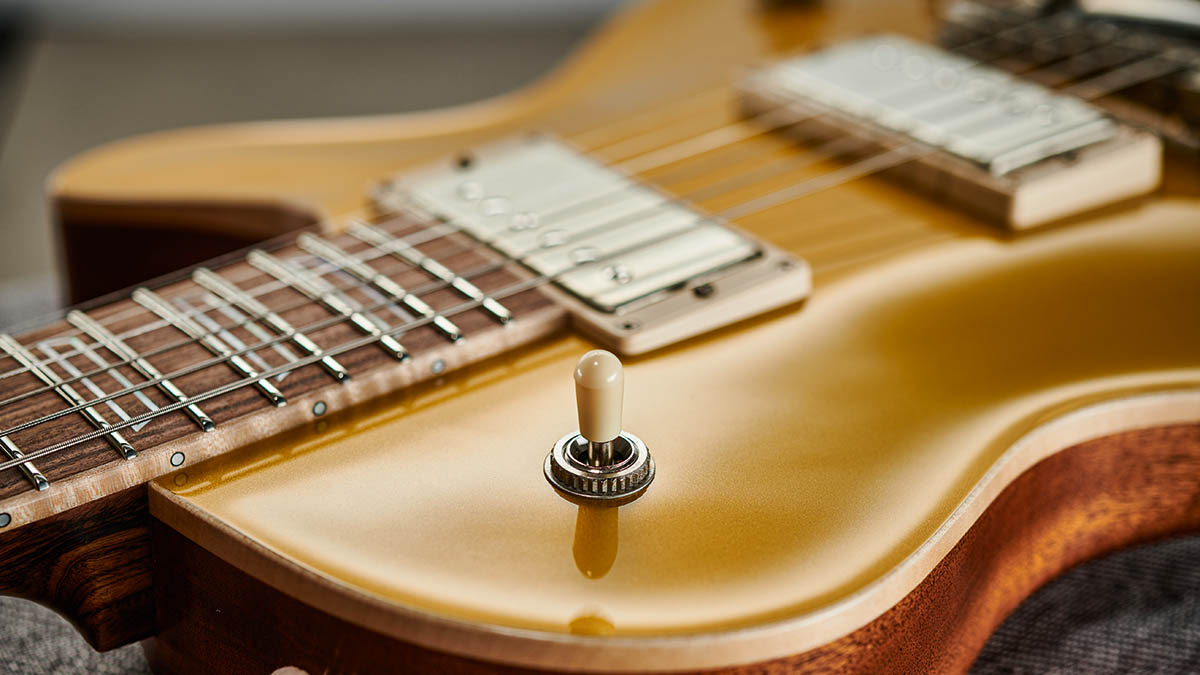
You’ll now be greeted with more of that exceptionally grained Santos on the neck, the beautiful mahogany body – dark stained to match the rosewood’s general hue – and, most of all, that incredible piece of design work and joinery that defines the heel and neck joint area. It’s like a piece of fine sculpture rather than a regular neck joint.
Of the model, Eggle himself comments, “I tried to make it as ergonomic as possible without compromising strength. This joint relies on accurate machining but also has some hand-fettling once glued. There’s no mortice – this is a ‘slipper’ joint, which is glued only – but it has a large surface area between the neck and body, so it’s very strong.”
We also love the way the neck and the body’s back and sides are hand-burnished so they sit somewhere between satin and gloss. Eggle continues: “The lacquer is sprayed as it normally would be for a gloss finish. We then flat that back by hand and finish with a fine steel-wool and wax. The neck is gunstock oil and steel-wool.”
All the latest guitar news, interviews, lessons, reviews, deals and more, direct to your inbox!
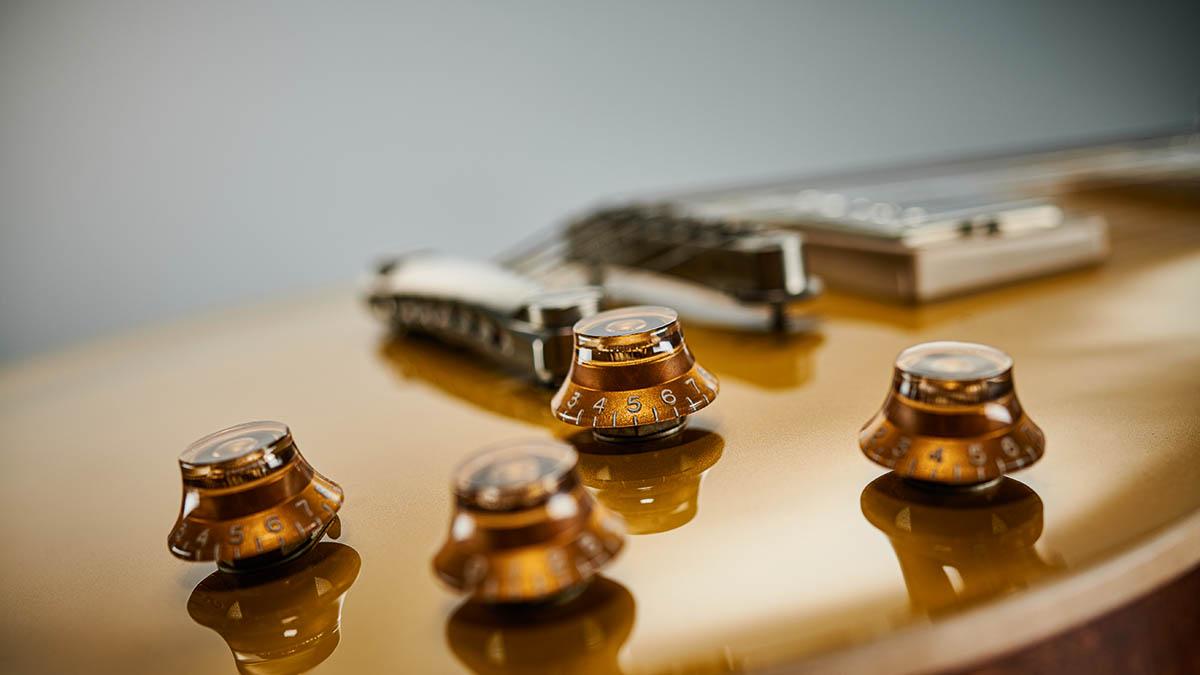
Patrick has found that rosewood has become a popular choice for his Macons’ necks, so the choice of Santos instead of the more familiar mahogany – or indeed Indian rosewood, which PRS began introducing on certain models some time ago – was partly down to customer taste, but also due to issues with the Indian variety.
“Yes, we keep being asked for rosewood necks on Macons,” he affirms. “But Indian rosewood is difficult to procure in these sizes, although not impossible, due to CITES restrictions on shipping it as raw lumber.”
While on the subject of timbers, the mahogany for our Macon’s body is the revered Honduran variety, as used on vintage Gibsons. Eggle said it’s chosen for its natural lightness in weight, but he also chambers it in a very specific way.
“Genuine Honduran mahogany is generally quite light anyway,” he says, “but here it also has some honeycomb chambering. We can build with or without this, of course, but almost nobody goes for the completely solid option. Many small cavities, rather than fewer large ones, reduces the risk of scooping the mids, I reckon.”
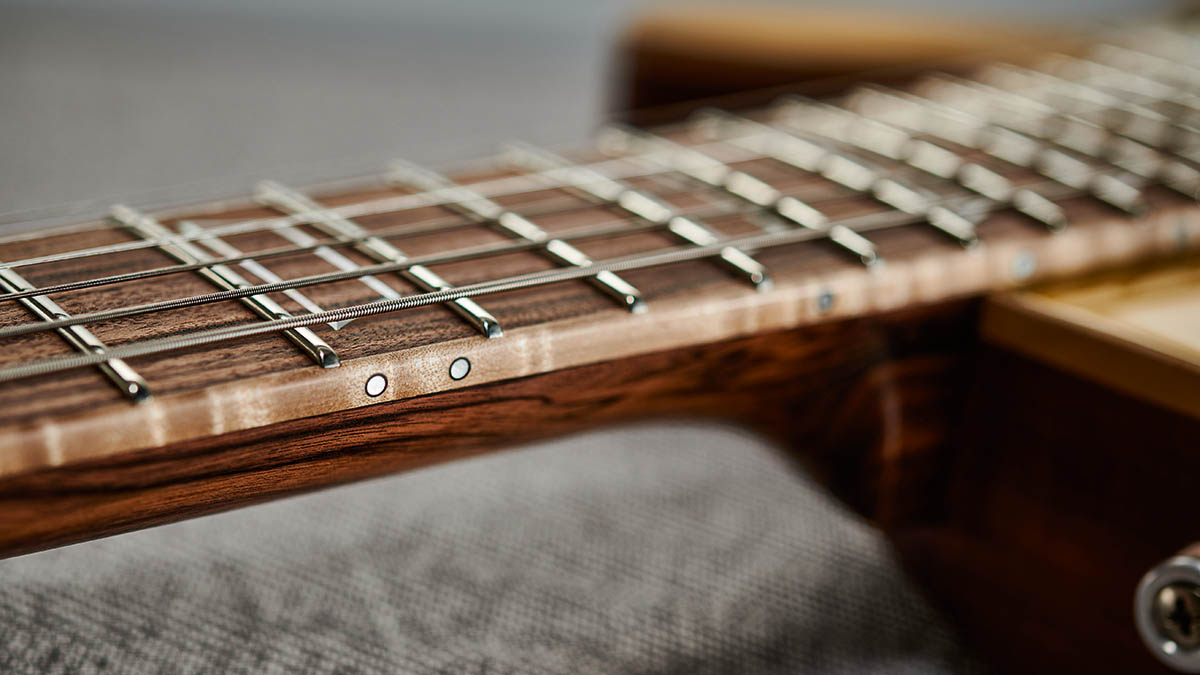
Since all Eggle guitars are hand-built, mostly to order, customers can opt for an almost infinite variety of pickup, hardware, timber and finish options. But gold-finished guitars usually stay on the plainer side of things. That means there is a set of Cream T’s nickel-plated 57 GT pickups, plus a standard tune-o-matic and stud tailpiece.
Eggle adds, “Regarding the pickups, we have been using Cream T for a while now. GT 57s are based on, and accurately reproduce, the sound of Geoff Whitehorn’s 57 Goldtop, so we have a modern guitar here but with a vintage tone.
“Geoff says he’s done some sound clips A/B’ing his original PAFs with the Cream Ts and he ‘honestly can’t hear a difference’. There’s also a ‘blower’ switch fitted to the bridge pickup tone control.” More on that particular appointment later.
Regarding that ‘straightforward’ bridge and tailpiece, even they have a story to tell. “They’re made by ABM in Berlin and milled from solid aluminium, not die-cast,” Patrick points out. “It’s an expensive option for us, but they’re definitely part of our guitars’ feel and tone.” Speaking of which…
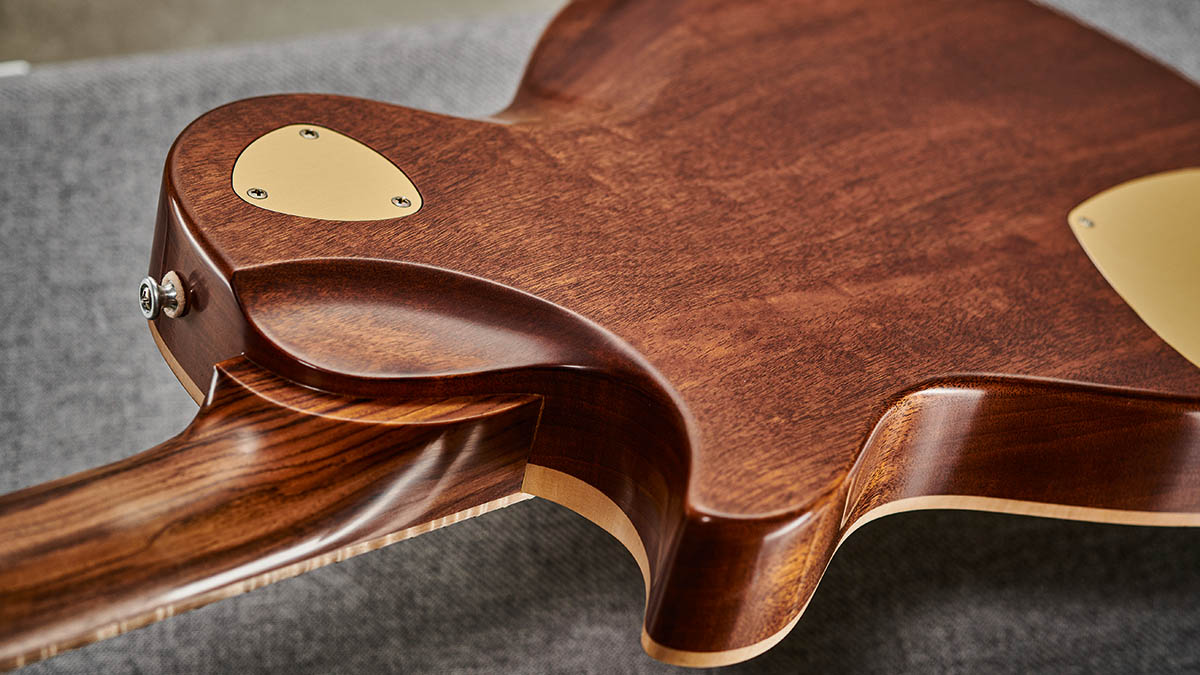
Feel & Sounds
Eggle says the Macon’s neck has no actual finish but is hand-rubbed to its beautiful sheen using gunstock oil and extremely fine steel-wool. It leaves the surface feeling silken to the touch and lends a virtually drag-free playing experience. He describes its dimensions as ‘fat C’, but it’s nowhere near as big as certain Gibsons we’ve played. In fact, it’s a very comfortable palmful, feeling slick and stress-free to play.
Top-end access is not as total as on an SG or ES-335, but then it’s never going to be on a single-cut due to the top bout restricting the thumb’s travels to those upper reaches. Most players won’t complain, though, and Eggle’s clever neck joint makes it easier to negotiate than its 55-year-old inspiration.
The medium-tall Jescar frets are nickel silver – Eggle has no particular view on this versus stainless steel – and the relatively flat Gibson-style flat 305mm (12-inch) radius makes for easy chording and slinky licks and bends. It’s likely that players of any other guitar type would find it a welcoming experience.
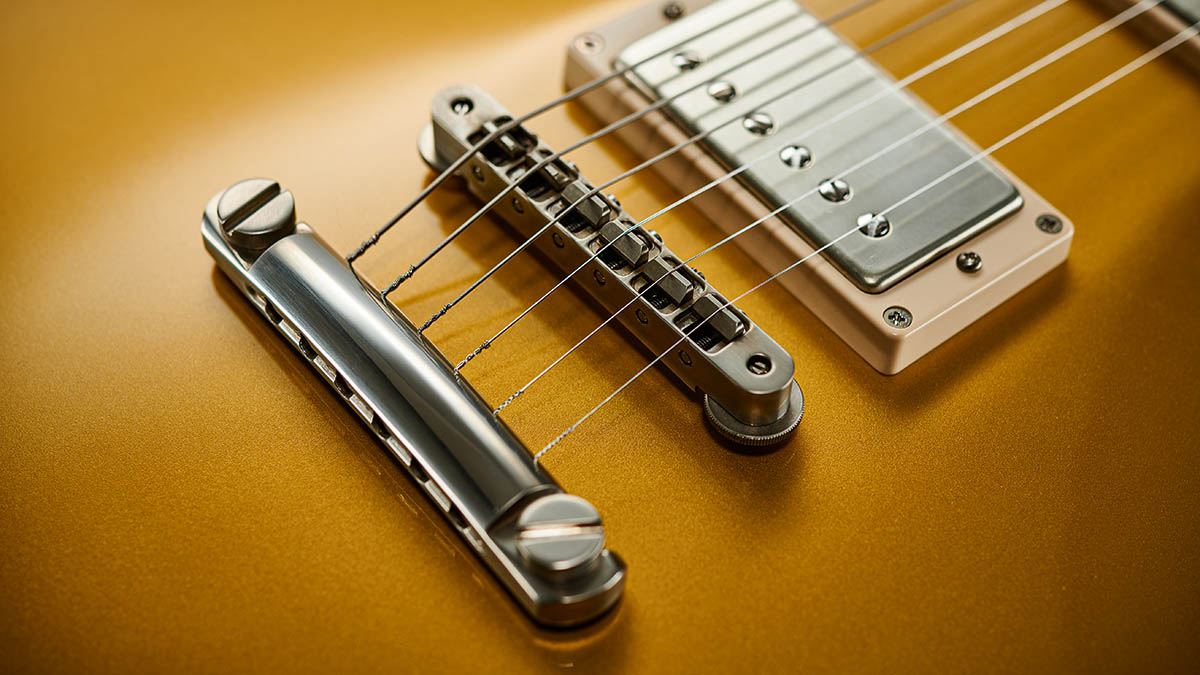
It’s always great to compare a guitar we’re not familiar with to one we know inside out. Without an actual Gibson Les Paul to hand, a Custom Shop ES-335 was a good benchmark against which to test the Macon. Quickly swapping instruments reveals differences such as output power, or noticeable thinness or fatness of tone.
As it happens, both instruments sit in similar sonic ballparks. The Gibson’s neck and bridge pickups are well matched, and, through our Matchless Lightning, speak with clear authority. Flipping across to the Macon, it’s a similar speaking tone but with even more weight.
The bridge Cream T is mildly more pushy than the neck, nudging the little 15-watt amp (which is no pushover) into sweet overdrive that little bit earlier. But like the Gibson there’s real clarity there, too, and knocking back the volume control on either or both pickups cleans things up beautifully.
There are no surprises in the controls department, either, save for the ‘blower’ switch. This routes the signal directly from the bridge pickup, bypassing all the controls no matter how the two volumes, two tones and toggle switch are set.
“It bypasses everything no matter where you are," explains Eggle. “But also, even if you are on the bridge pickup with everything wide open, there is a slight lift when blown.”
He’s also right about that; it’s a nice little ‘kick’ that will probably be more noticeable at stage levels, but we think the whole idea is so sensible that almost any guitar would benefit from it.
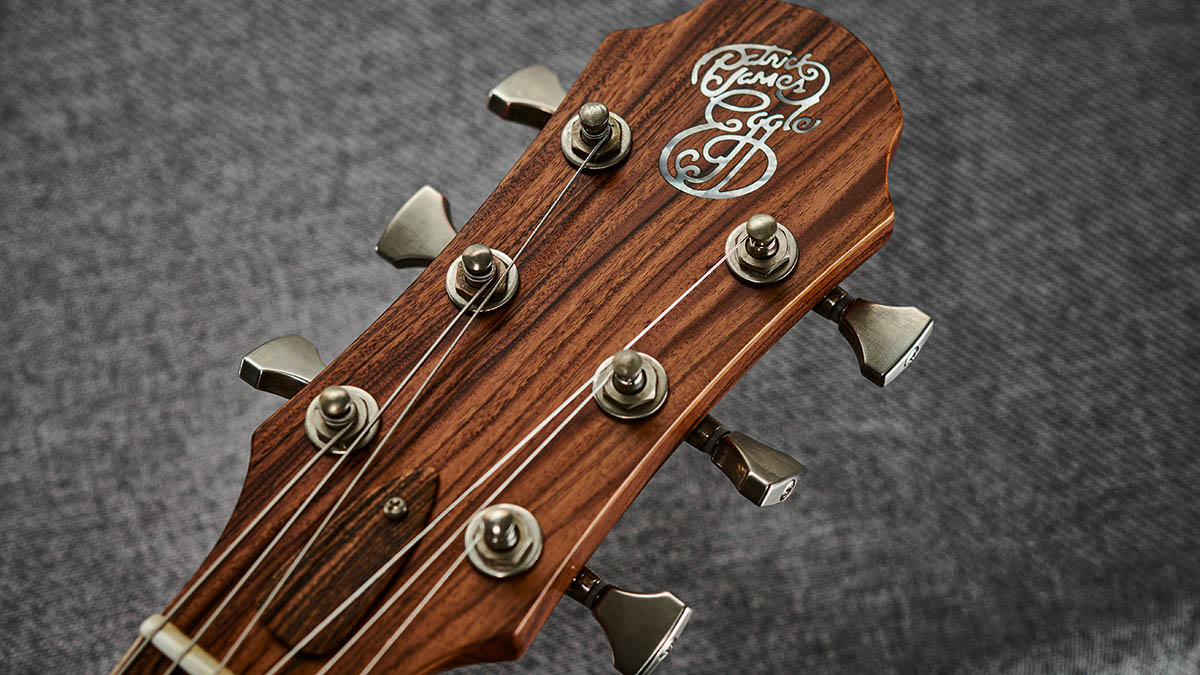
Verdict
Like Nik Huber over in Germany, Patrick has made it his life’s work to inject fanatical attention to detail into everything he does. Nothing is random; each part of the equation is chosen to absolutely suit its purpose.
So, whether that’s the carefully chosen timbers for the job, the beautifully hand-burnished finish of the guitar’s back, sides and neck, the remarkable crafting of the neck to body join, or just the pickups and hardware perfectly matched to the instrument, you can see the artistry before you, and feel it in your hands.
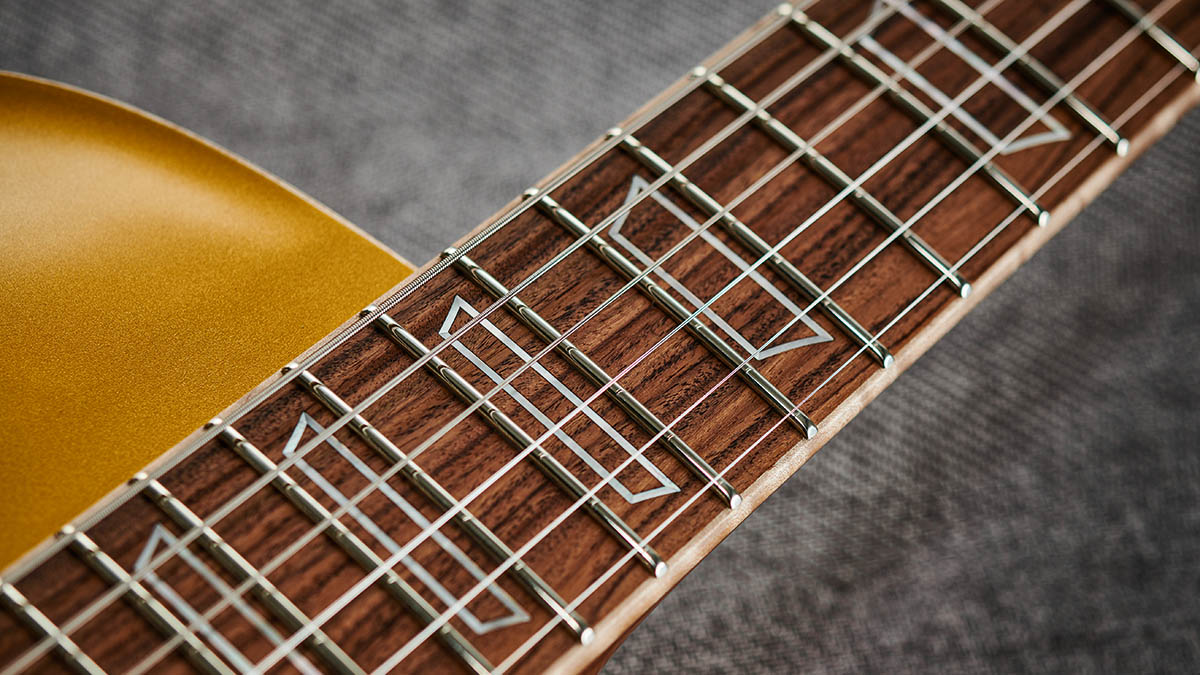
The Macon SC Goldtop is beautifully designed, flawlessly constructed, plays uncompromisingly well, sounds fantastic and is delightful to behold. And remember, if you’d prefer a high-grade flamed maple top in dark tobacco sunburst, P-90 pickups or that long Bigsby referred to earlier, speak to your Eggle dealer and your wish is their command.
This is not a cheap guitar, but compare it with Murphy Lab Gibsons, PRS’s Private Stock Range and those Nik Hubers just mentioned, and it looks like something of a bargain. The basic model, without Santos neck and other luxury appointments, is £4,400, pretty much the same price as a Core-level PRS 594 Singlecut and Custom Shop Fender Teles are pushing that.
So, for everything you get with a guitar like this, we’d say value for money is a given. As Eggle asserts: “We strive to build guitars that are inspirational and easy to live with.” He’s not wrong there.
Specs
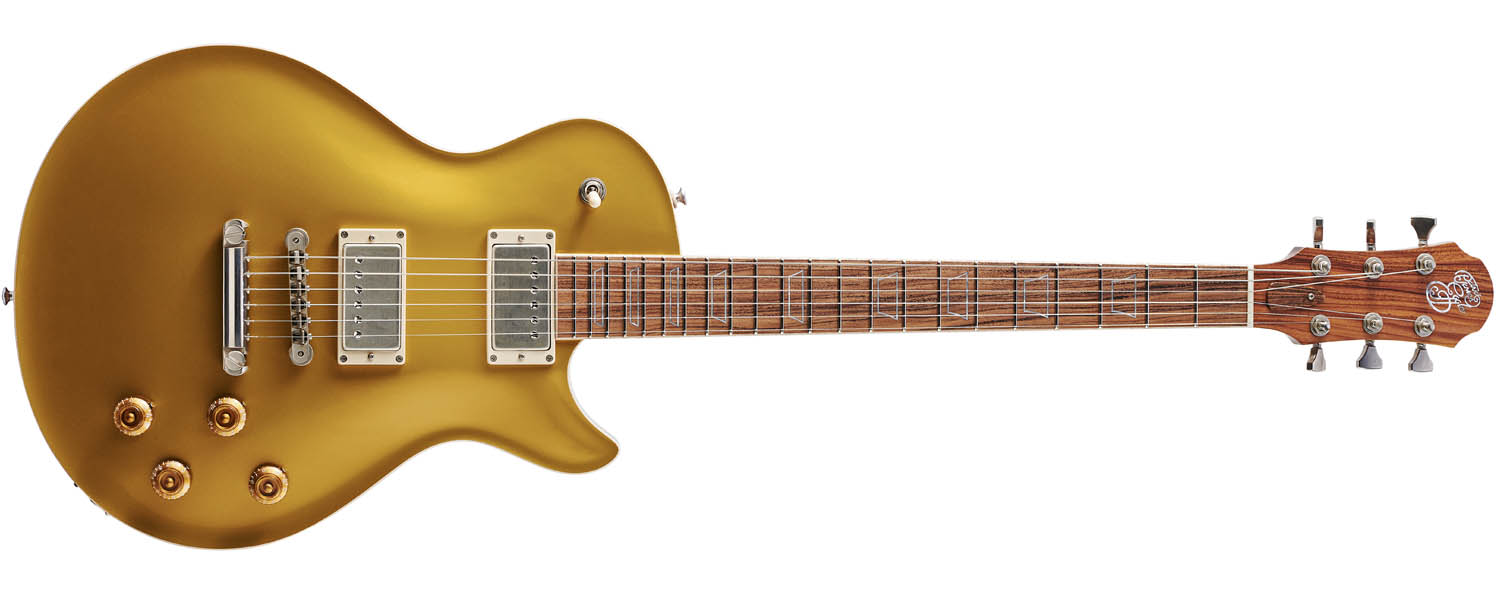
- PRICE: £5,440 (inc hard case)
- ORIGIN: UK
- TYPE: Single-cutaway, chambered electric
- BODY: Chambered mahogany with AA-grade maple cap
- NECK: Santos rosewood, with ‘Fat C’ profile
- SCALE LENGTH: 625.47mm (24.625”)
- NUT/WIDTH: Bone/42.8mm
- FINGERBOARD: Figured maple bound Santos rosewood, ‘frame’ inlays, 305mm (12”) radius
- FRETS: 22, medium/tall, Jescar 55090
- HARDWARE: Nickel-plated, open-geared Hipshot Classic Open tuners, ABM tune-o-matic bridge and stud tailpiece
- STRING SPACING, BRIDGE: 52mm
- ELECTRICS: 2x nickel-plated Cream T GT 57 humbuckers, 3-way toggle pickup selector switch, 2x volumes, 2x tones with push-pull ‘blower’ switch on bridge pickup tone pot
- WEIGHT (kg/lb): 3.7/8.14
- OPTIONS: The base price is £4,400. Options can be discussed. For example, our Santos rosewood neck adds £500, the fingerboard £200. The Cream T humbuckers add £100, ditto the Hipshot tuners, the Aztec Gold top finish adds £140
- RANGE OPTIONS: Macon Double Cutaway is the double-cut version of our review model; Macon Junior – slab-bodied, simpler version
- LEFT-HANDERS: To order (price depends on spec)
- FINISH: Nitrocellulose Aztec gold gloss top, with dark-toned natural back in hand-burnished satin
- CONTACT: Patrick James Eggle
In the late '70s and early '80s Neville worked for Selmer/Norlin as one of Gibson's UK guitar repairers, before joining CBS/Fender in the same role. He then moved to the fledgling Guitarist magazine as staff writer, rising to editor in 1986. He remained editor for 14 years before launching and editing Guitar Techniques magazine. Although now semi-retired he still works for both magazines. Neville has been a member of Marty Wilde's 'Wildcats' since 1983, and recorded his own album, The Blues Headlines, in 2019.
